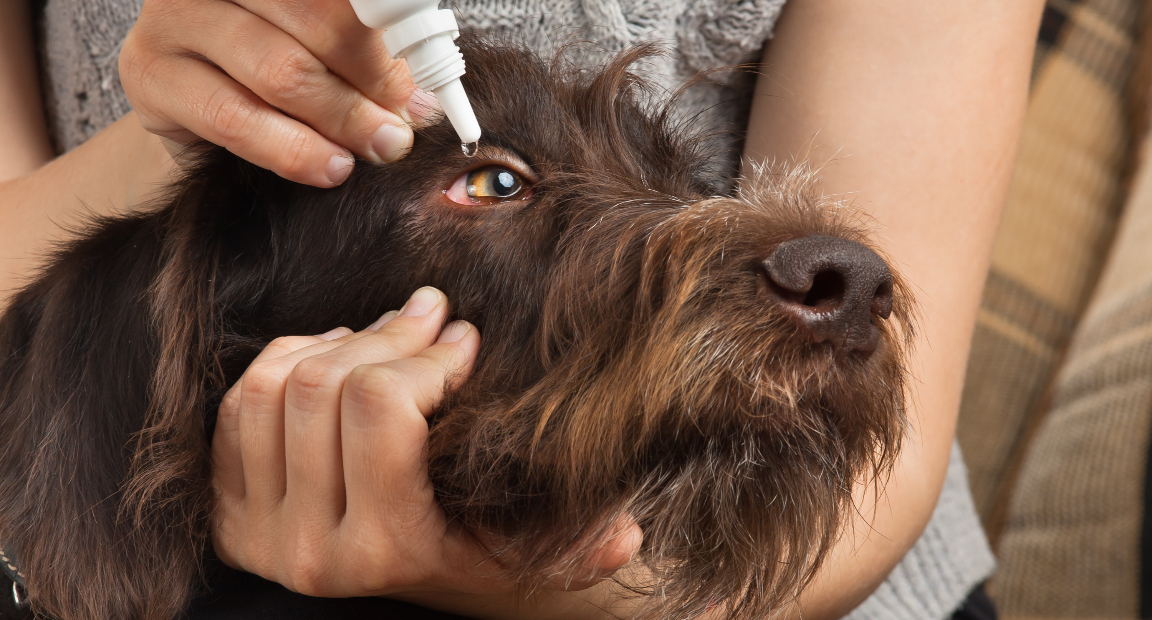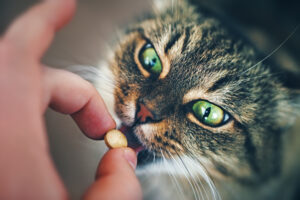What is Conjunctivitis?
Conjunctivitis is an inflammation of the conjunctiva, the thin and transparent tissue that covers the front surface of the eye and lines the inner surface of the eyelids. It can occur in both dogs and cats and is sometimes referred to as “pink eye.” Conjunctivitis can have various causes, including infections (bacterial, viral, or fungal), allergies, irritants, foreign objects, or underlying health conditions.
Signs & Symptoms
Common signs and symptoms of conjunctivitis in dogs and cats include:
- Redness and swelling of the conjunctiva
- Watery or thick discharge from one or both eyes
- Excessive blinking or squinting
- Itching or rubbing of the eyes
- Sensitivity to light
- Crusty or matted fur around the eyes
- Cloudiness or changes in the appearance of the eyes
The severity of symptoms can vary depending on the underlying cause and the individual animal. According to PetSure Claims data, dog breeds at higher risk of developing conjunctivitis include Cavoodles, Golden Retrievers and Groodles. For our feline friends, Domestic Short Hair, Ragdolls and Burmese feature in the top breeds likely to present to the veterinarian with conjunctivitis.
Diagnosis
If you suspect your dog or cat has conjunctivitis, it’s important to seek veterinary care for a proper diagnosis. The veterinarian will perform a thorough examination of the eyes and may also conduct additional tests such as eye staining or cultures to determine the cause of conjunctivitis. This helps guide appropriate treatment options.
Treatment
The treatment of conjunctivitis depends on the underlying cause and severity of the symptoms. Some common treatment options include:
- Eye drops or ointments may be prescribed to help reduce inflammation, relieve symptoms, and combat infection if present. Make sure to follow the veterinarian’s instructions for administration and if you are unsure about how to apply eye drops, ask your veterinarian who will be happy to show you. You can also watch our video on how to give eye drops.
- Cleaning the affected eye(s) with a warm, damp cotton ball or cotton pad to help soothe discomfort, reduce swelling, and remove discharge.
- In some cases, oral medications such as antibiotics or antiviral drugs may be prescribed to address underlying infections such as cat flu in cats or other systemic conditions such as allergic skin disease contributing to conjunctivitis.
Recovery
Thankfully, most cases of conjunctivitis in dogs and cats resolve within a few days to weeks with treatment. However, the recovery time can vary depending on the underlying cause and the individual’s response to treatment. It’s important to follow the veterinarians instructions, completing the full course of medication especially antibiotics, and attend recheck appointments as advised.
Prevention
While not all cases of conjunctivitis can be prevented, there are measures you can take to reduce the risk of occurrence:
- Keep the face and eyes clean, especially for brachycephalic breeds or pets with long fur around the eyes. Regularly clean around the eyes and remove any discharge or debris.
- Protect your pet’s eyes from irritants such as dust, smoke, chemicals, or excessive wind.
- Take precautions to prevent eye injuries, such as avoiding long grass with seeds, or dense scrub where eyes could get scratched.
- Treat underlying conditions, allergies, cat flu and other eye conditions that could cause or exacerbate conjunctivitis.
- Maintain regular routine check-ups with your veterinarian so that they can check the eyes for any abnormalities and maintain overall good health.
Frequently Asked Questions
Some forms of conjunctivitis can be contagious, especially those caused by infections. It’s important to practice good hygiene and avoid direct contact between infected and non-infected animals to prevent transmission.
Conjunctivitis can reoccur, especially when there is an underlying cause or predisposing factors. Regular veterinary care and appropriate preventive measures can help reduce the frequency and severity of recurrence.
It is not recommended to use over-the-counter eye drops without veterinary guidance, as the pet may not have conjunctivitis and may have something more serious, such as a corneal ulcer. Treating with the wrong medication could make things much worse in this case. So, it is always best to get a veterinary diagnosis and advice before treating your pets eyes.
Conjunctivitis is generally covered by comprehensive accidental injury and illness pet insurance policies administered by PetSure (check our brand partners at petsure.com.au/partners), unless related to a pre-existing condition or exclusion. Please refer to your policy documents and Product Disclosure Statement (PDS) for more information.
According to PetSure claims data from 2022, the average claimed amount for dogs with conjunctivitis was $177, and the maximum claimed amount was $2,333. For cats the average claimed amount was $216, with a maximum claimed amount of $1,964.
*Reimbursement for these claims would be subject to limits, such as annual benefit limits or sub-limits, benefit percentage, applicable waiting periods and any applicable excess. Cover is subject to the policy terms and conditions. You should consider the relevant Product Disclosure Statement or policy wording available from the relevant provider. Treatment relates to Calicivirus and all medically related conditions in that policy period.
Pet insurance can help by covering a portion of the eligible vet bill if the unexpected happens. Because it is difficult to predict the costs of veterinary care, it can help to have measures in place to help prepare for the unexpected. Check out our partner network and explore our policy tools to find a pet insurance policy.
Not all conditions or items are covered by Pet Insurance. Refer to the applicable Product Disclosure Statement for information about coverage and exclusions.



 Fact checked
Fact checked





